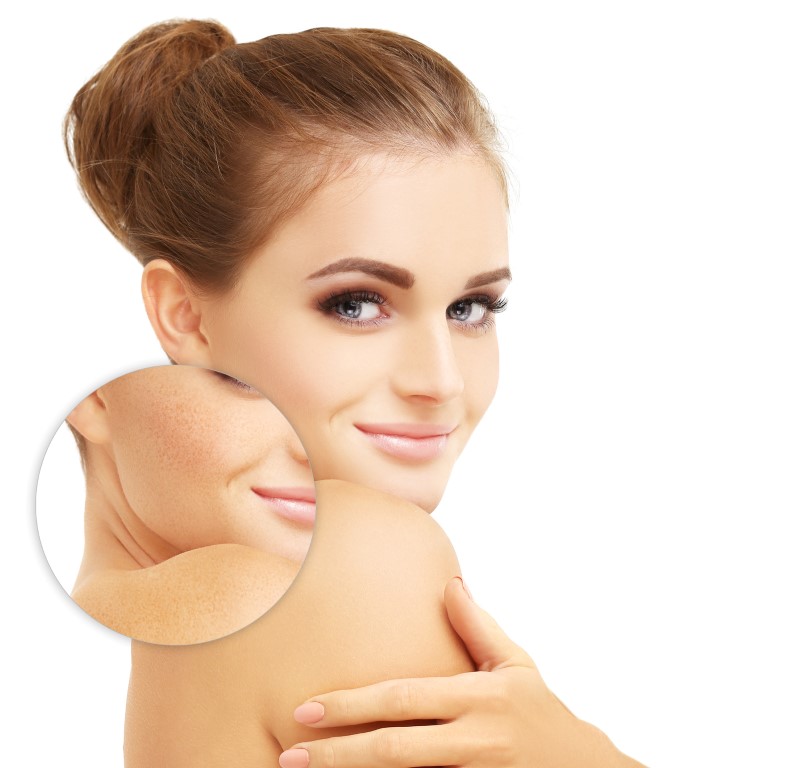Freckles are flat, tanned circular spots that typically are the size of the head of a nail. The spots are multiple and may develop randomly on the skin, especially after repeated exposure to sunlight. These are particularly common in persons of fair complexion on upper body skin areas like the cheeks, nose, arms, and upper shoulders. They may appear as young as at age 1 or 2.
Freckles are just skin cells that contain a pigment (color) called melanin. Melanin is a chemical made by skin cells called “melanocytes.” Melanin helps to protect the skin from the Sun’s harmful ultraviolet rays by reflecting or absorbing them.
The presence of freckles is related to rare alleles of the MC1R gene, though it does not differentiate whether an individual will have freckles if they have one or even two copies of this gene. Also, individuals with no copies of the MC1R do sometimes display freckles. Even so, individuals with a high number of freckling sites have one or more of variants of the MC1R gene. Most red haired individuals have two variants of the MC1R gene and almost all have one. The variants that cause red hair are the same that cause freckling.
Types of freckles
- Ephelides- It describes a freckle which is flat and light brown or red and fades with reduction of sun exposure. Ephelides are more common in those with light complexions, although they are found on people with a variety of skin tones. The regular use of sunblock can inhibit their development.
- Liver spots ( also known as sun spots or lentigines )- look like large freckles, but they form after years of exposure to the sun. Liver spots are more common in older people.
prevention and treatment of freckles
- Not all brown marks can be prevented. Careful sun protection will reduce the number of new solar lentigines. Staying out of the sun and using sun protective clothing is much more effective than sunscreens alone. Sunscreens must have high sun protection factor (SPF 50+), good broad spectrum cover against ultraviolet radiation (UVA), and should be applied liberally and frequently.
- Regular applications of anti-aging or fading creams may also help. These may contain hydroquinone, or antioxidants such as: alpha hydroxy acids, vitamin-c, retenoids, azelaic acid.
- However, brown marks may be removed more rapidly and effectively by chemical peels, cryotherapy or certain pigment lasers that target melanin in the skin.




